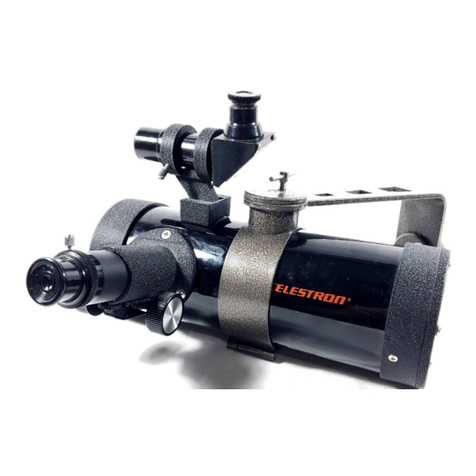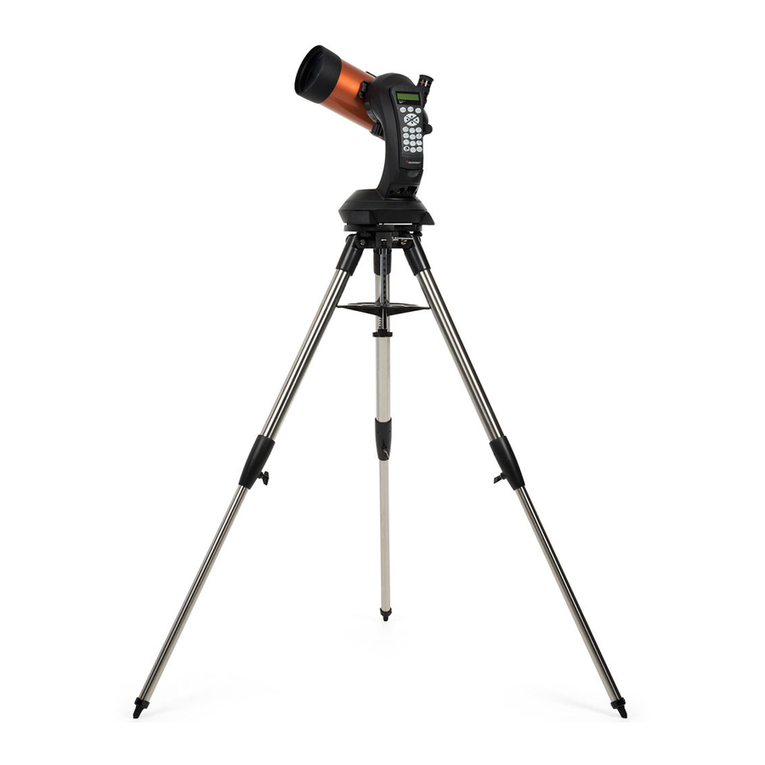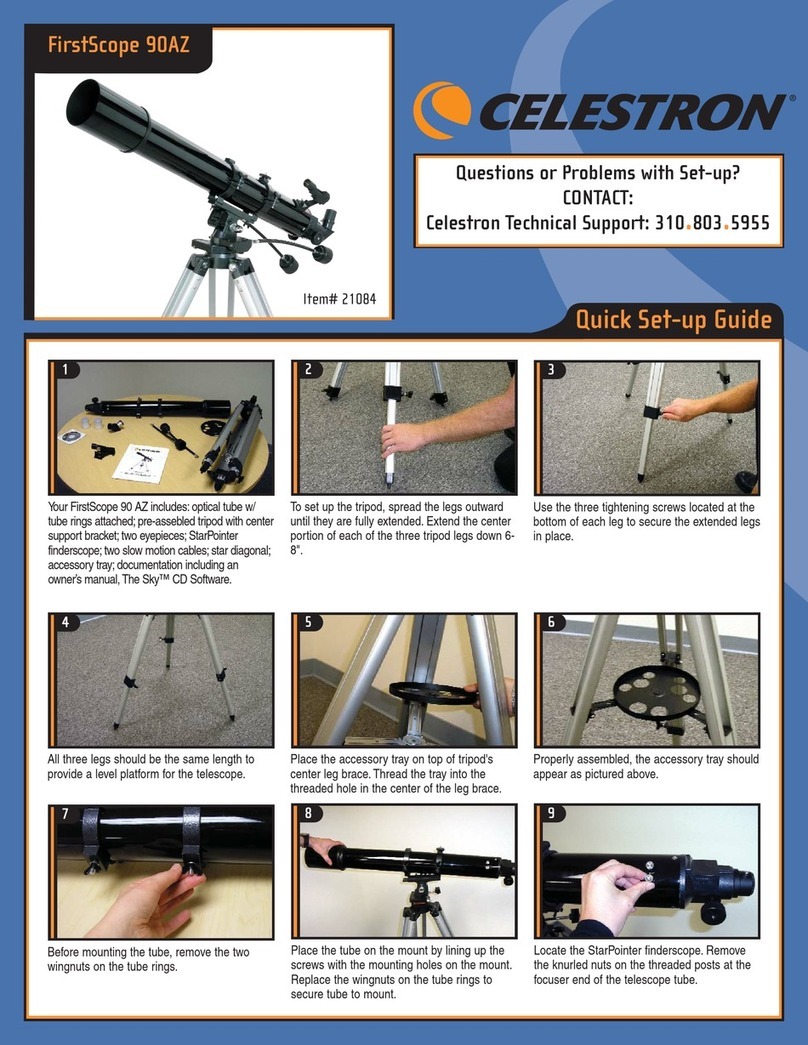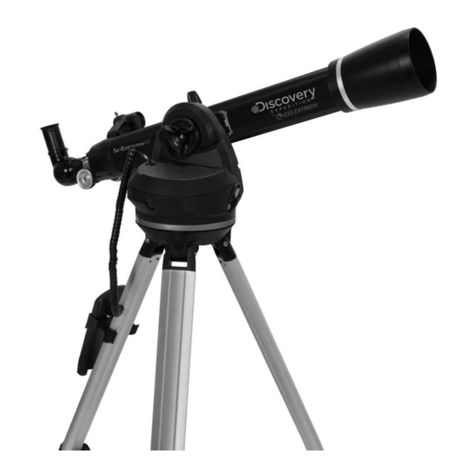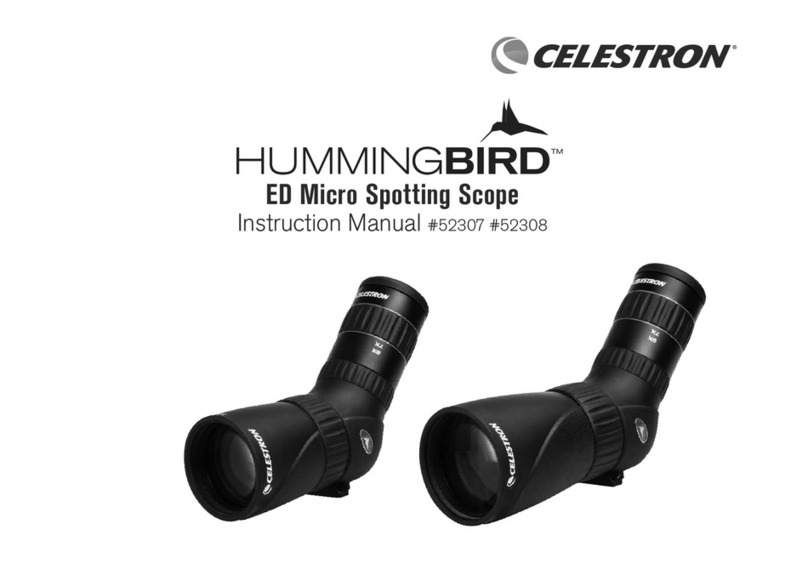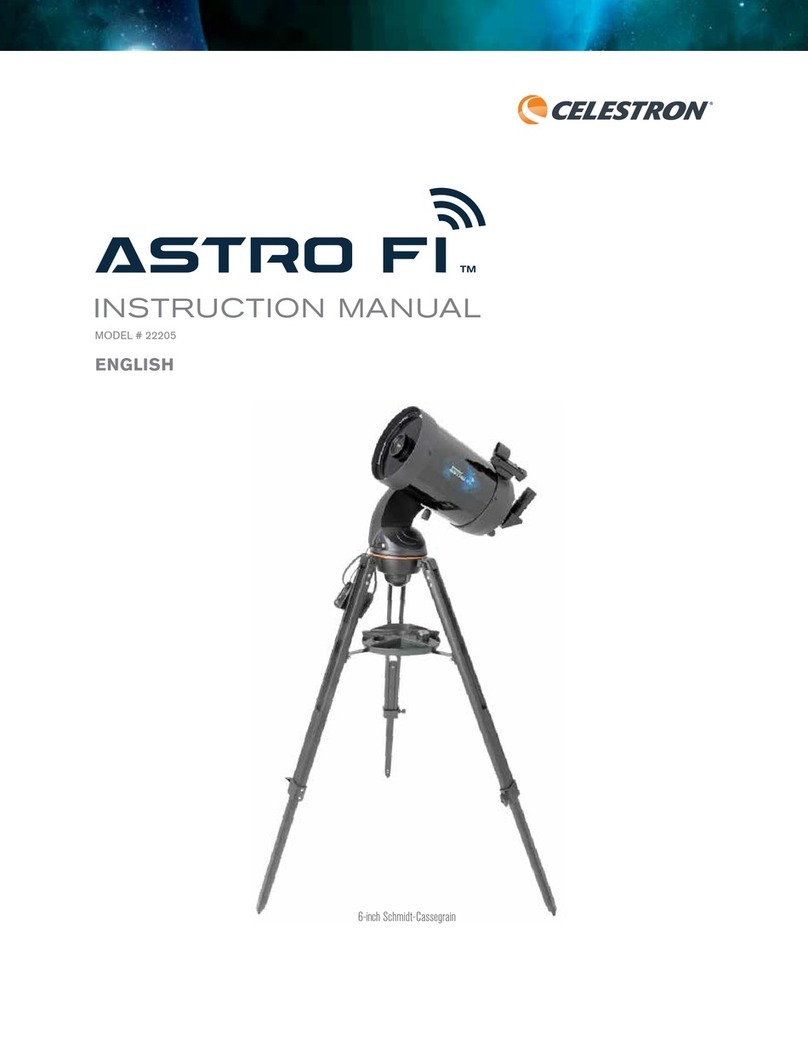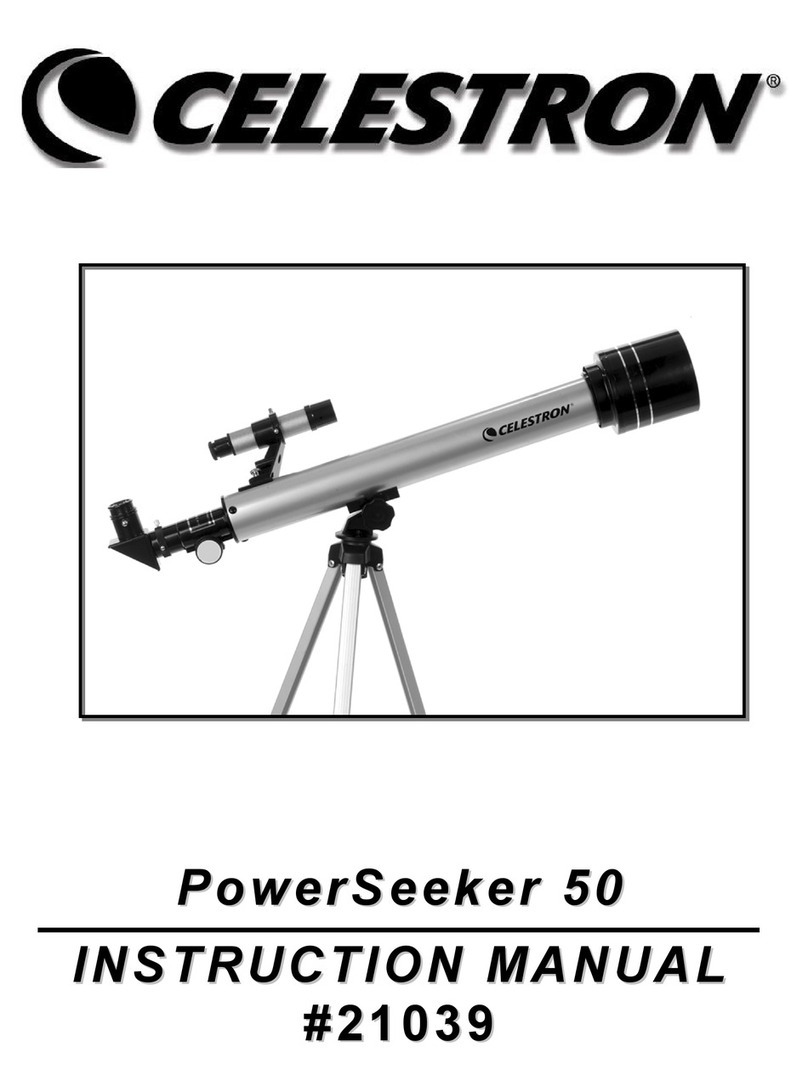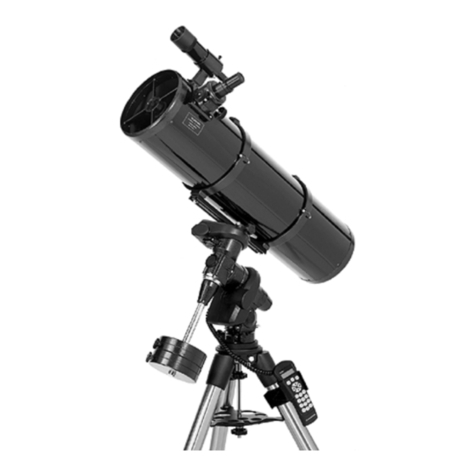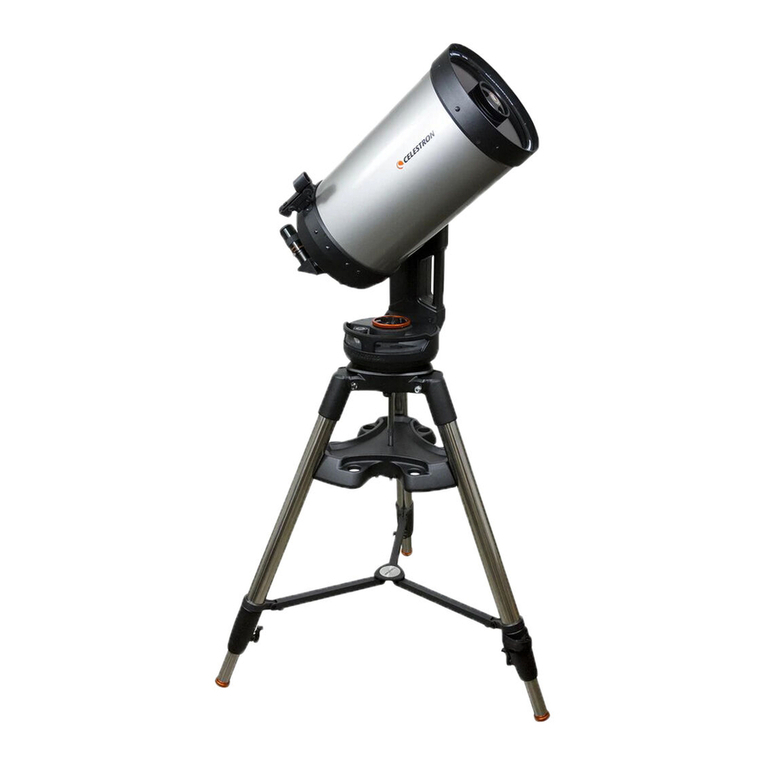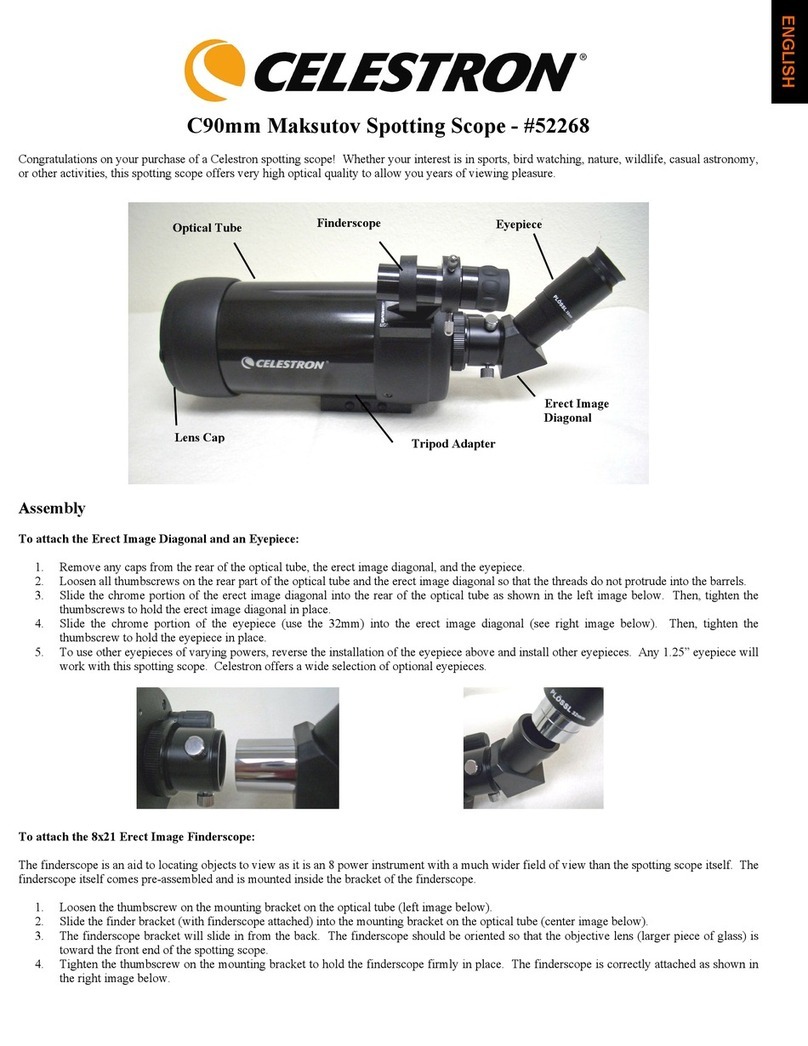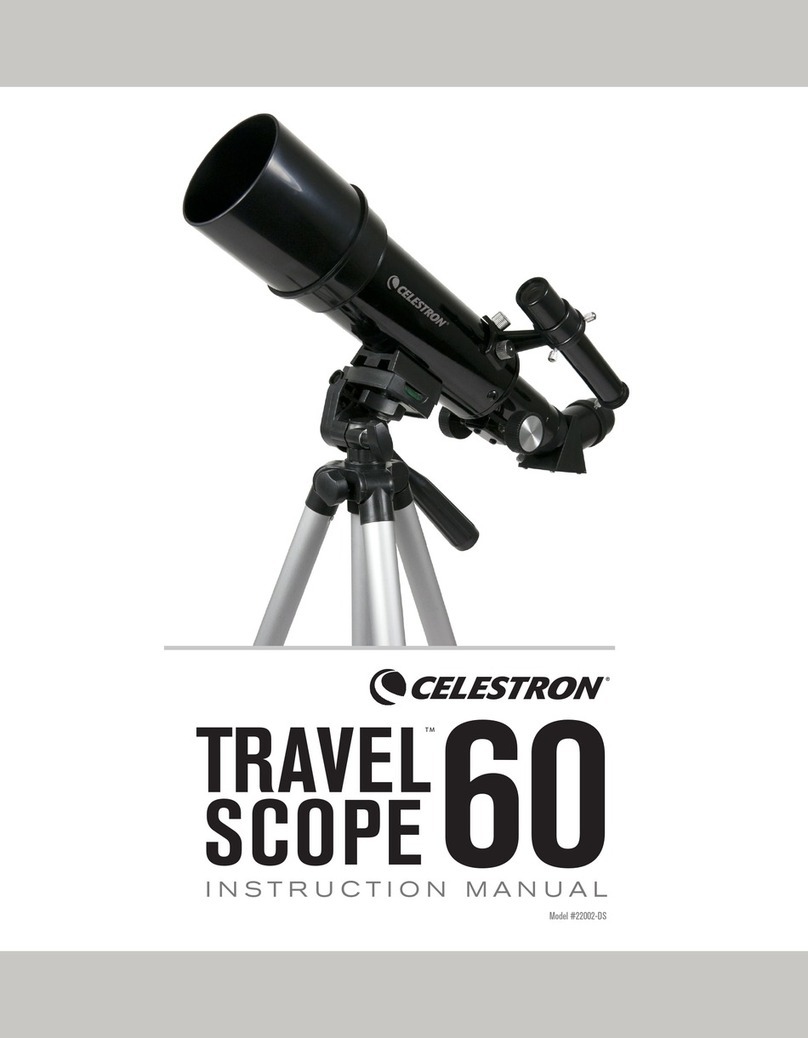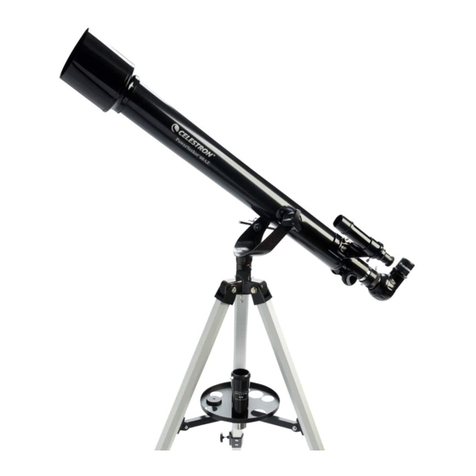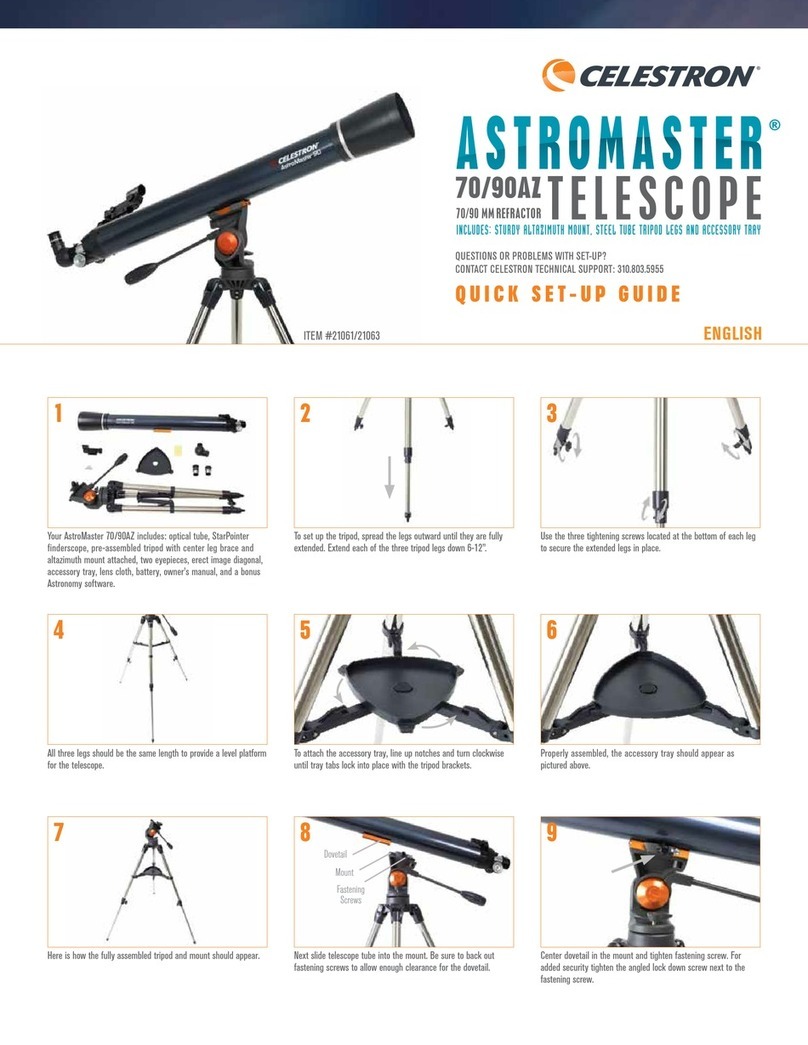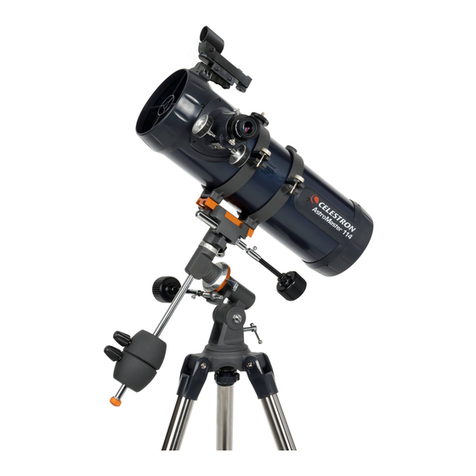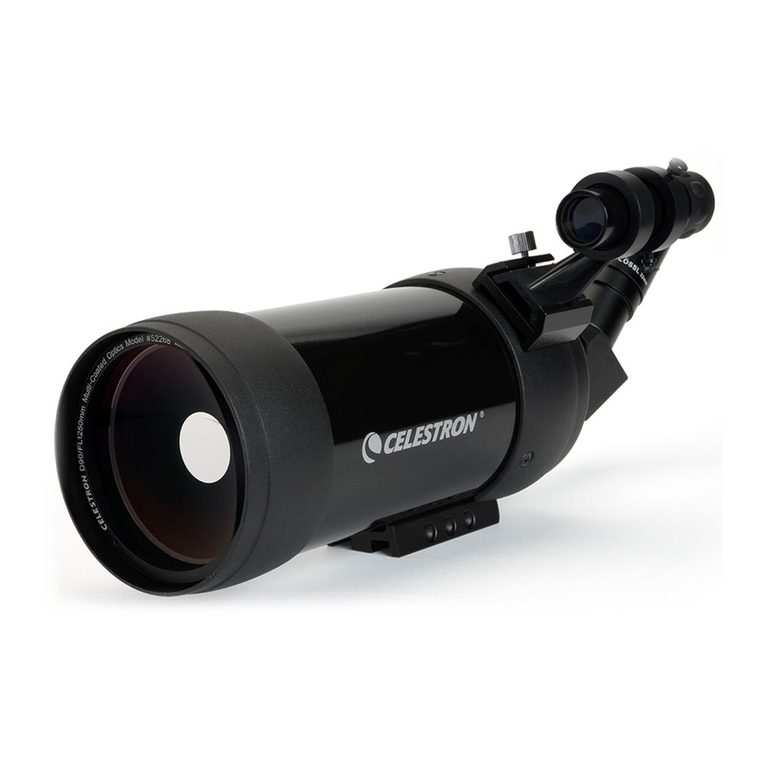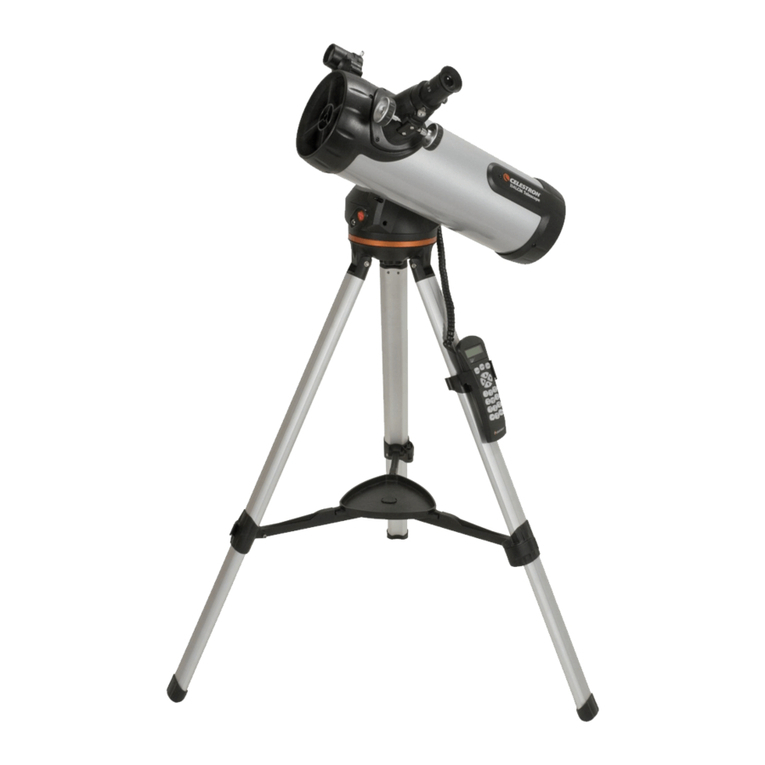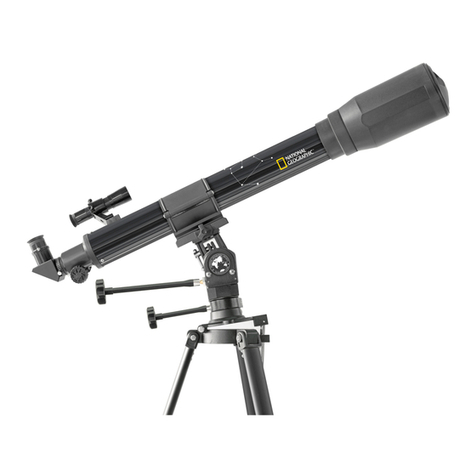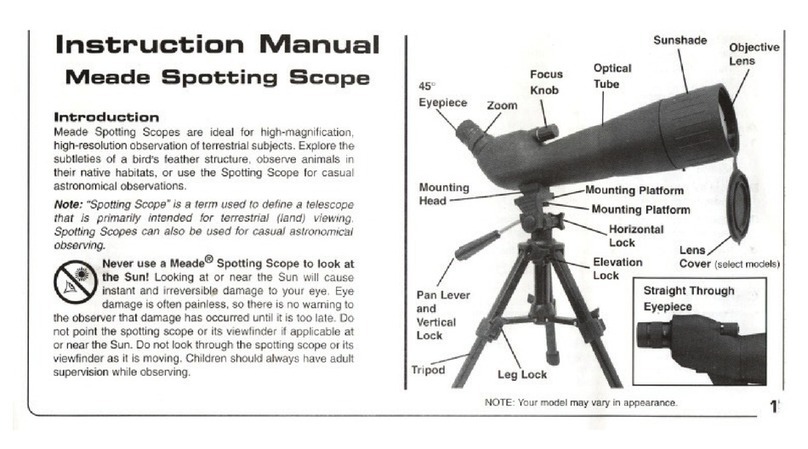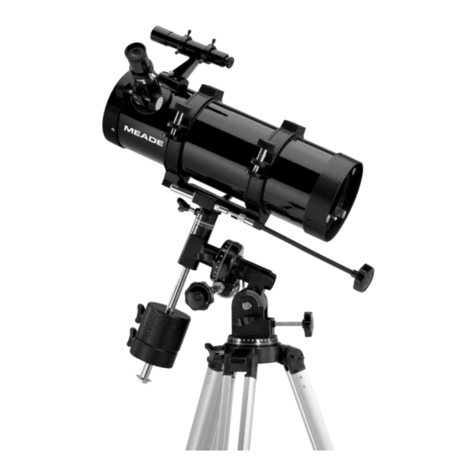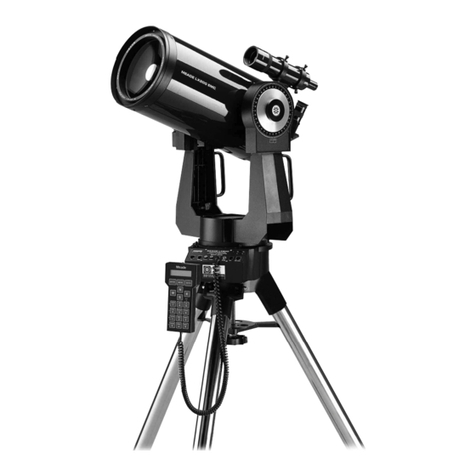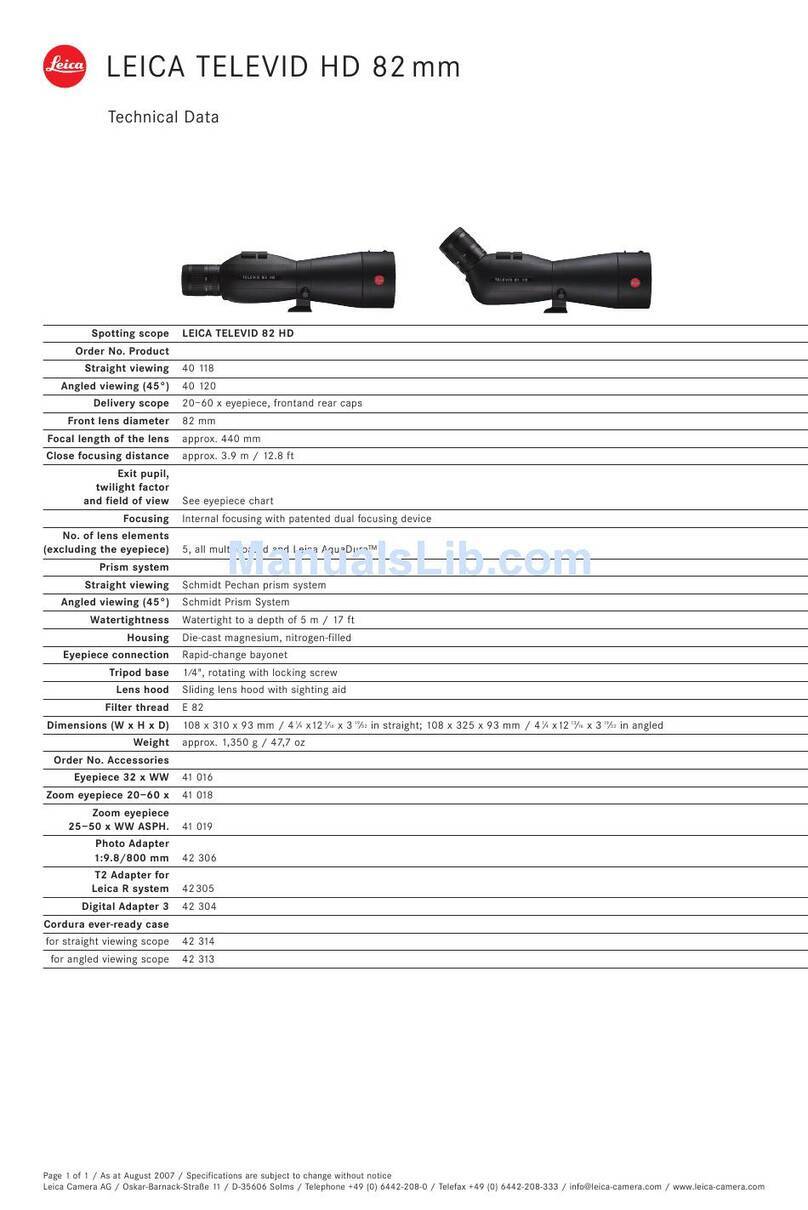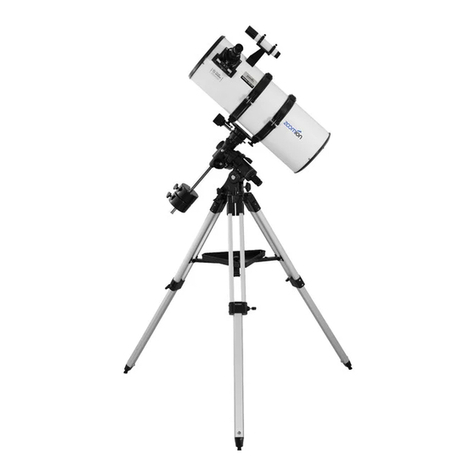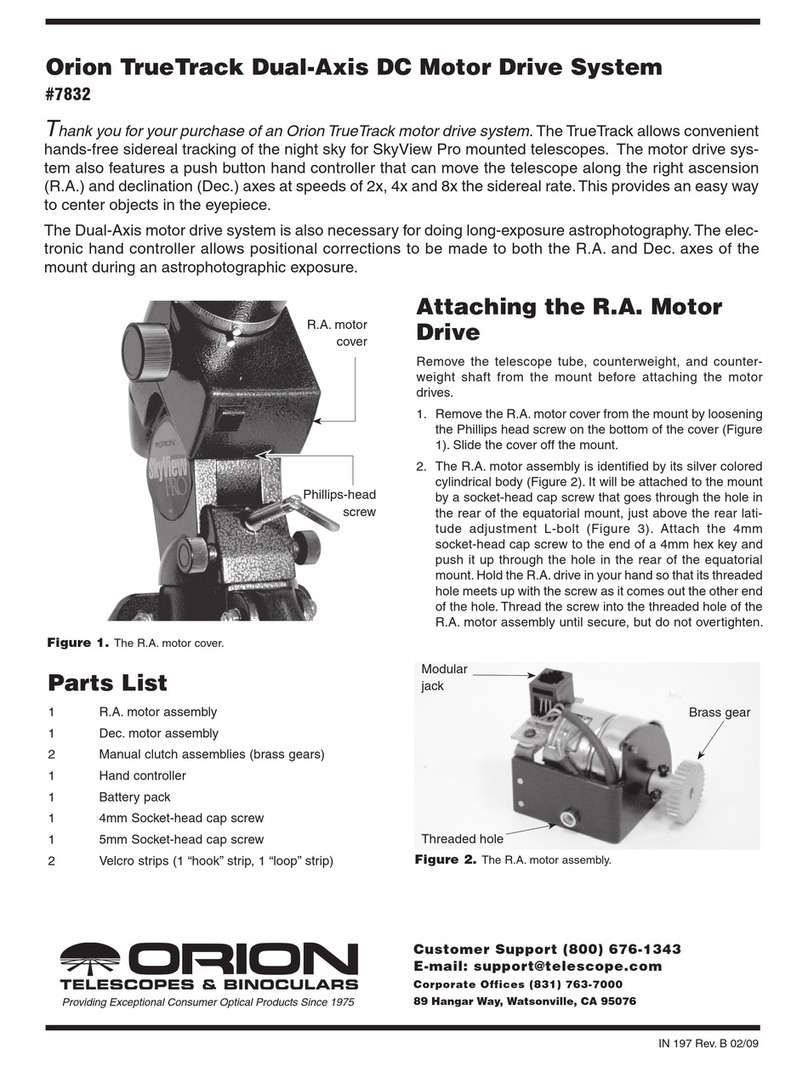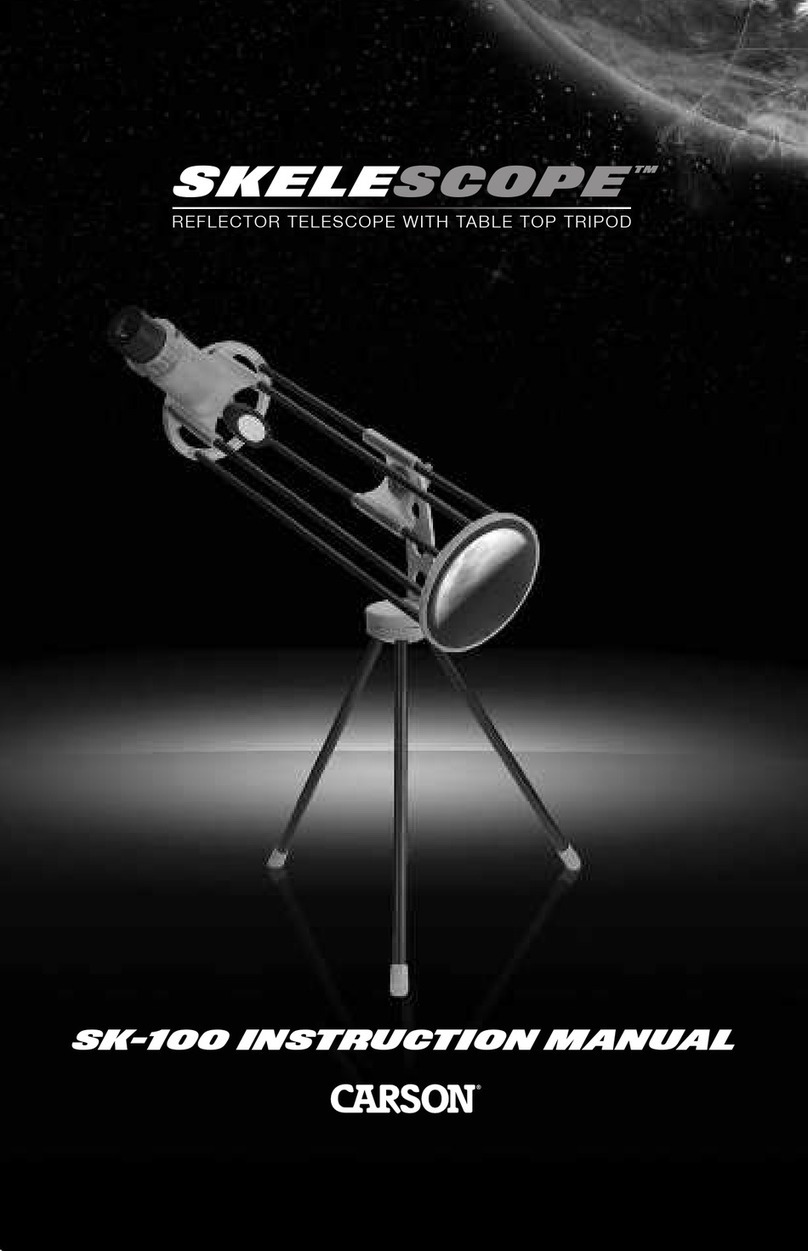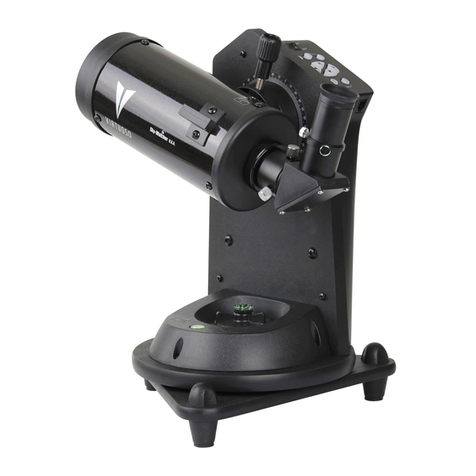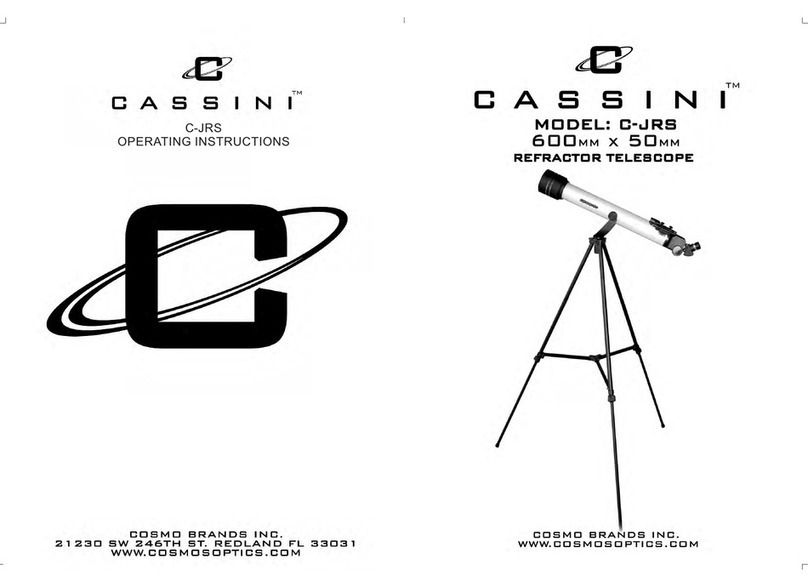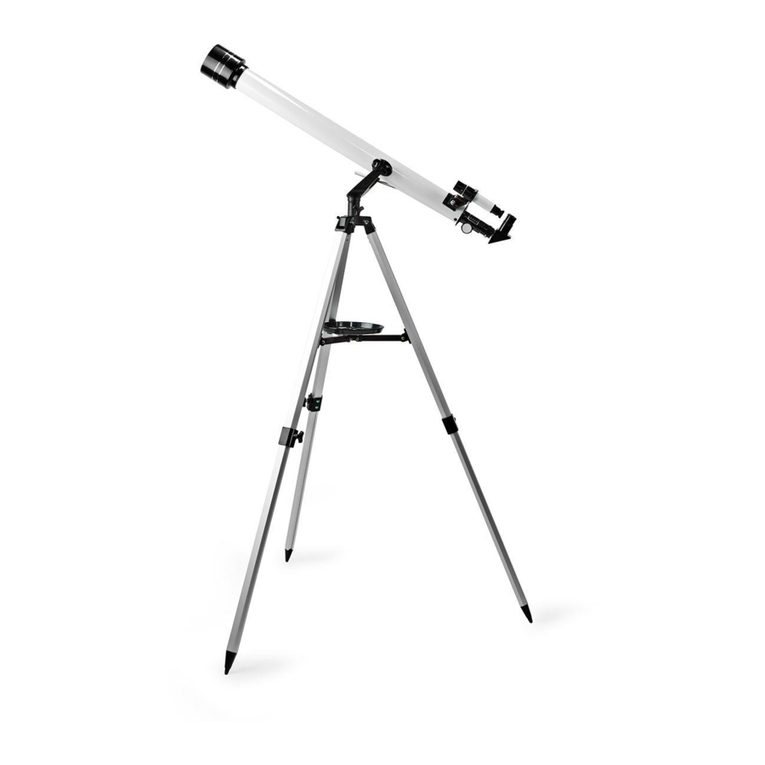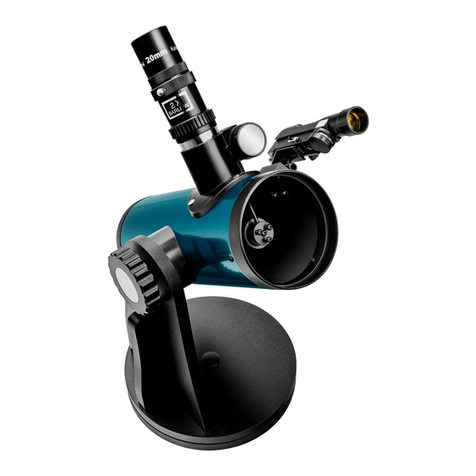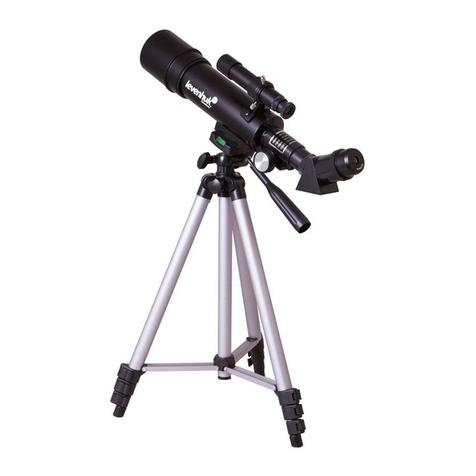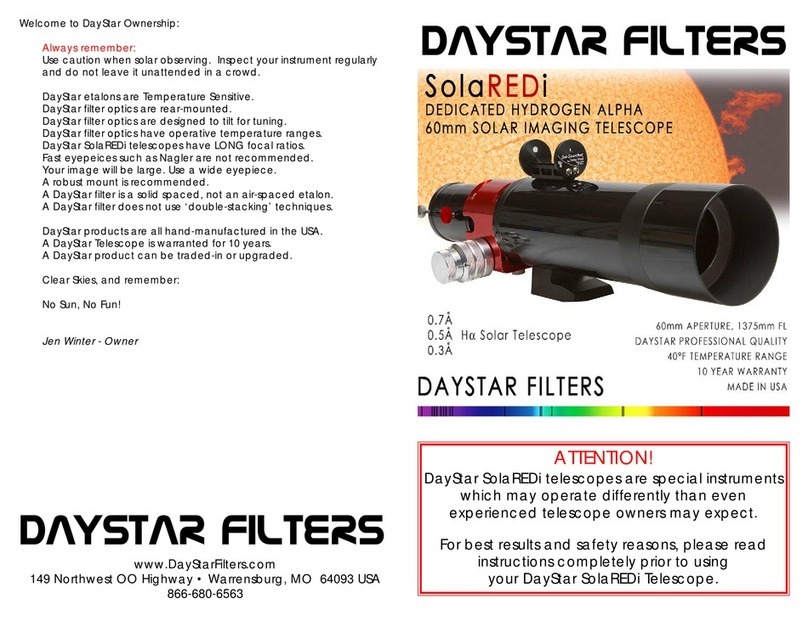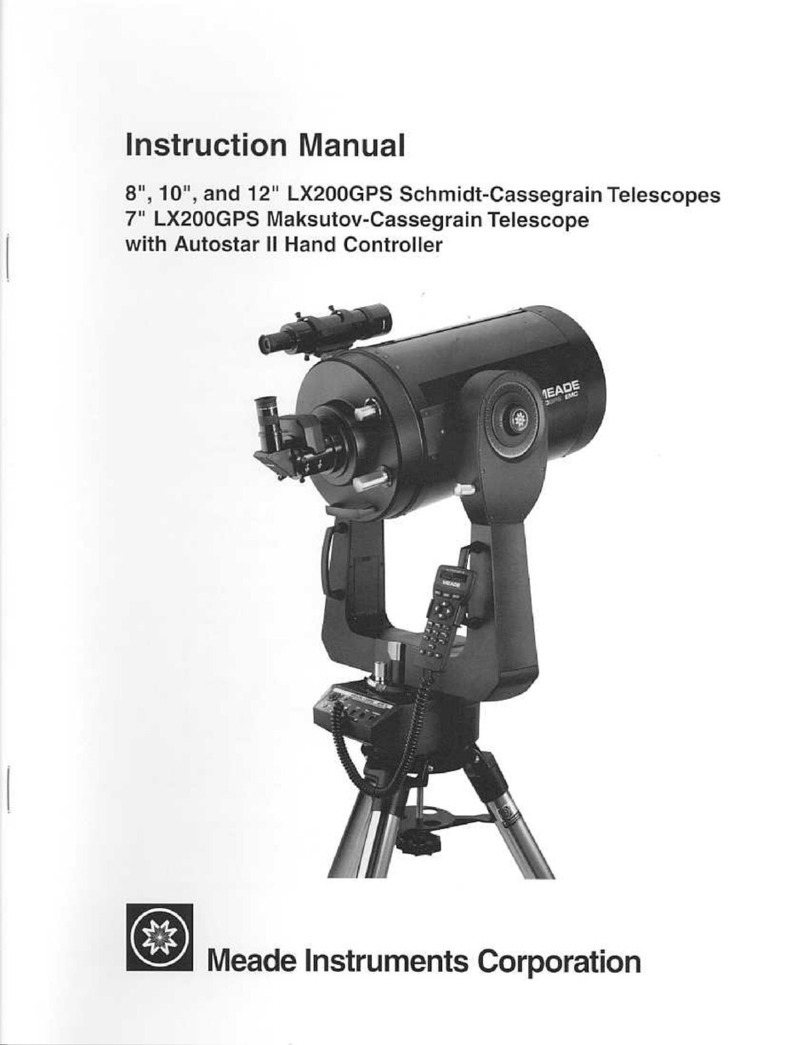
The emblem on the end of
the focus knob shows the
correct rotational direction
for focusing your telescope
.
• 6x30 finder
• Highest useful magnification — 300x
• Lowest useful magnification — 23x
• Limiting magnitude (visual) — 13
• Near Focus — Approximately 20'
• Angular field of view with standard eyepiece: 1.04°
• Angular field of view using optional Reducer/Corrector lens: 1.7°
• Lens cover
• Starbright XLT coatings — XLT coating on corrector yield greater light
transmission and provides greater reflectivity on primary and secondary
mirrors
Once your spotting scope is fully assembled, you are ready for your first look.
This section deals with the basics of your spotting scopes operation.
The Celestron C5 spotting scope focusing mechanism controls the position of the
primary mirror which is mounted on a sleeve that slides back and forth on the
primary baffle tube. The focusing knob,
which moves the primary mirror, is on the rear
cell of the C5 to the right of the diagonal and
eyepiece. Turn the focusing knob until the
image is sharp. If the knob will not turn, the
primary mirror has reached the end of its
travel on the focusing mechanism. Turn the
knob in the opposite direction until the image
is sharp. Once an image is in focus, turn the
knob clockwise to focus on a closer object and
counterclockwise for a more distant object. A
single turn of the focusing knob moves the
primary mirror only slightly. Therefore, it
will take many turns (about 40) to go from
close focus (approximately 20 feet) to infinity.
For astronomical viewing, out-of-focus star
images are very diffuse making them difficult,
if not impossible, to see. If you turn the focus
knob too quickly, you can go right through focus without seeing the image. For
best results, your first astronomical target should be a bright object (like the
Moon) so that the image is visible even when out of focus.
The Celestron C5 comes with a 6x30mm finder that helps in aiming at distant
objects that are hard to find in the narrow field of the spotting scope. The first
number used to describe the finder is the power while the second number is the
diameter of the objective lens in millimeters. This means the 6x30 finder is 6
